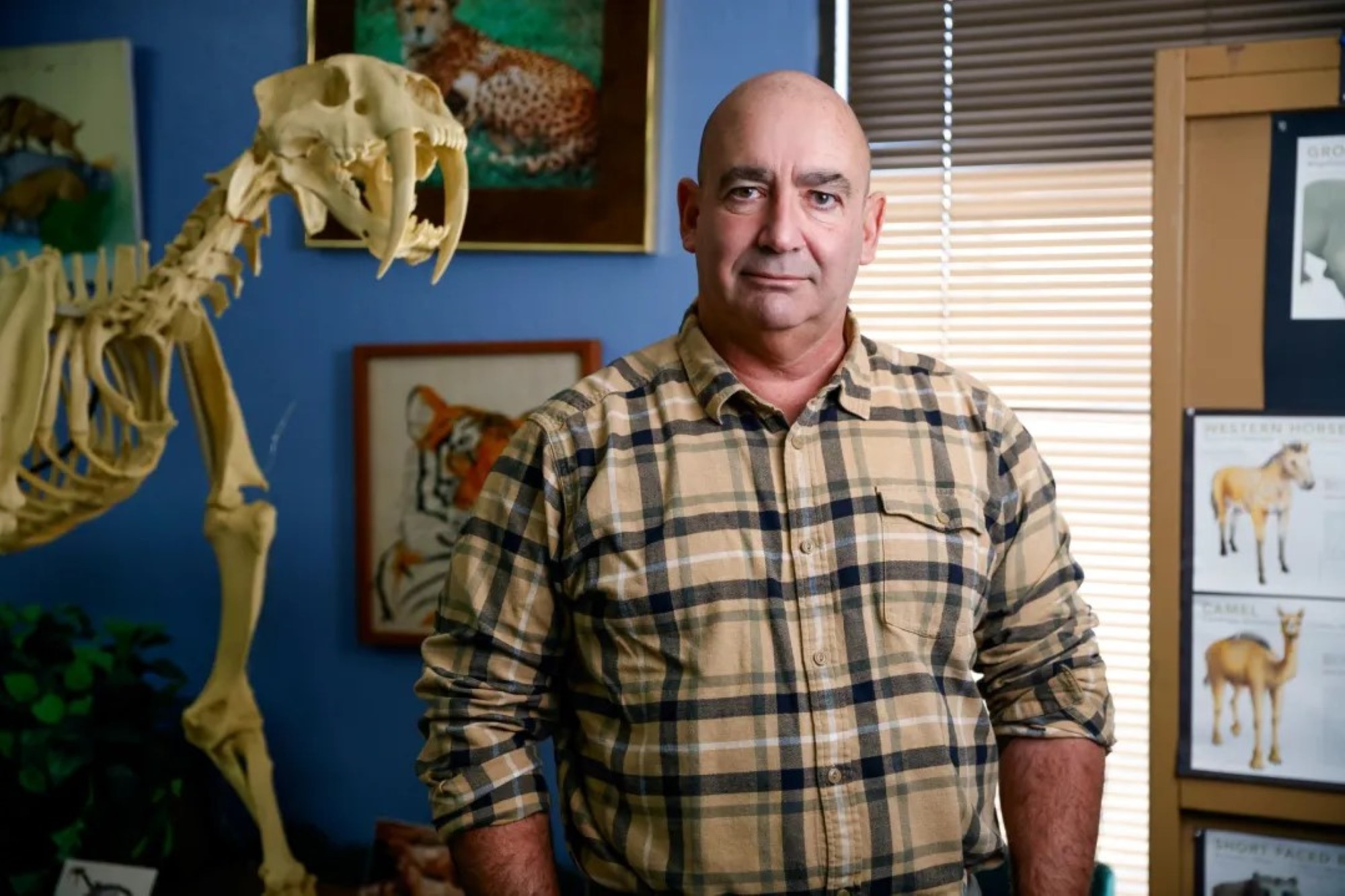Meet the fossil hunter protecting history at billion-dollar Bay Area construction projects
Co-Author(s): John Metcalfe, Bay Area News Group
These ancient remnants have scientific value and, as Indiana Jones would say, belong in a museum. That’s where people like Jim Walker come in. Walker is a senior paleontologist/geologist for Applied Technology & Science, a San Francisco engineering and environmental-consulting firm. His job is to monitor construction sites for fossils and, when they’re discovered, quickly get them out of the dirt and into safe storage.
Walker has worked on some of the largest government and private projects in the Bay Area, from the $2.2 billion Transbay Transit Center in San Francisco to the $810 million Calaveras dam seismic retrofit and Samsung’s $300 million corporate headquarters in San Jose. He monitors many Caltrans projects and has helped shepherd fossils from those digs to public exhibits at the Children’s Natural History Museum in Fremont.
It’s the sense of mystery that has kept Walker engaged in his job for the last 14 years.
“I often joke that with the whole paleontological thing, it’s like the ultimate cold-case file,” he says. “You’re coming across an animal that’s been dead for 10,000 years, and you’re trying to get a little picture of what its life was like — and also what that world looked like.”
Walker recently took time from his home fossil-study station – complete with drafting table, microscope, dental tools and soon, an air scribe – to chat about the rigors and importance of his work.
A It’s probably best characterized as “salvage palaeontology.” This work is really all around the CEQA requirements – that’s the California Environmental Quality Act. Fossils are considered a nonrenewable scientific resource. So what I do is collect any fossils deemed scientifically significant and get them to a museum or something like that. And this is always work that’s related to a construction project.
Q Have you ever had to halt a construction project?
A I have never had to halt construction. We have redirected work sometimes. My job is to keep my client in compliance, so they don’t run afoul of any agencies that would be watching this stuff. If we have determined there is a possibility of them damaging these nonrenewable scientific resources, our job is to mitigate that, which usually means getting the stuff out of the ground as quickly as we can.
Q Why quickly?
A So those machine operators do not sit idle for hours, waiting for someone to come and tell them, “Yeah, this is a fossil and we should do something about it.” Or (conversely), “You have found an interesting-looking rock.” You got to remember that having equipment sit idle can run into the tens of thousands of dollars very quickly. So we are a cheap insurance to keep them in compliance.
Q What types of things do you find?
A Typically, most of our stuff is from Pleistocene or “Ice Age” time (from 2.6 million to 11,700 years ago). Depending precisely on what we’re talking about, there wasn’t a Bay back then. The Bay was a big valley with a river running through where the Golden Gate is and meeting the ocean just past the Farallon Islands. Across that field, we had mammoths, bison, camels, giant sloths and a lot of animals we recognize today – deer, coyotes, brown squirrels and rabbits.
Q Have you ever dug up human bones?
A With any bone that’s possibly human-sized, the first thing I do is call a specialist in human osteology. I can get in as much trouble as anybody else on the job site for messing around with human remains.
Q Because it could be a crime scene?
A That’s the thing most people don’t get. The first question is, “Is this a homicide?” Or they can be Native American (bones), and then there’s a whole protocol to deal with that.
Q You monitored the Calaveras dam seismic retrofit, which lasted from 2011 to 2018, for the San Francisco Public Utilities Commission. Find anything interesting?
A I think we pulled something like 10 or 12 whale skulls out of that project — at least one we believe is a new species. That was a very special project.
Q Wow – whales?
A Yeah. We worked with the construction firm and used their heavy equipment. We’re talking about whales, so in a couple of cases, we’re removing things that probably weighed two or three tons. I have now seen more 15 million-year-old dead whales than I’ve seen modern dead whales. Those remains went to the University of California Museum of Paleontology.
Q How about the Transbay Transit Center?
A With that one, a dredge operator picked up a big clamshell bucket of wet sediments, dropped it down on the ground and from 30 feet away, saw a rock that looked kind of funny. It turned out to be a mammoth’s tooth. So we were brought in. After that, I found other bone fragments, possibly skull or clavicle or shoulder blade. (In) the San Francisco business district, they have found mammoth and a couple species of bison.
Q And the Samsung headquarters in San Jose?
A There was a horse there, probably from the Ice Age. Horses were pretty common – we see them along the 680 corridor and have found them on the South Peninsula. They ran in big herds. You’d be hard pressed to tell them apart from a modern horse; they were slightly smaller on average.
Q What’s one of the most unique fossils you’ve found?
A At one project we worked on, for a public utility in Alameda County (around 2015 to 2017), we found a marine vertebrate called a desmostylus. It looked kind of like a small hippopotamus, but is probably more closely related to elephants. It has the dubious honor of being the only order of marine mammal to have gone extinct. It’s interesting, because we’re quite concerned now about dugongs (a manatee cousin) and animals like that. These are animals sitting on the edge of extinction. In some ways, desmostylus kind of filled a similar niche – it was an herbivore, like dugongs are today. So understanding them helps us understand what’s going on today.
Q Do you ever just dig up junk? Old batteries, car hubcaps and the like?
A I often get people contacting me with what turn out to be rocks. Probably one of the hardest things for me to do is let them down gently. Because it’s kind of a bummer: They’re really excited, they think they found something, but it’s often just a rock. But I’m a geologist, so there is no such thing as “just a rock.” I tell them all about their rock, and it keeps them interested in it.
https://www.marinij.com/2024/03/02/meet-the-fossil-hunter-protecting-history-at-billion-dollar-bay-area-construction-projects/



